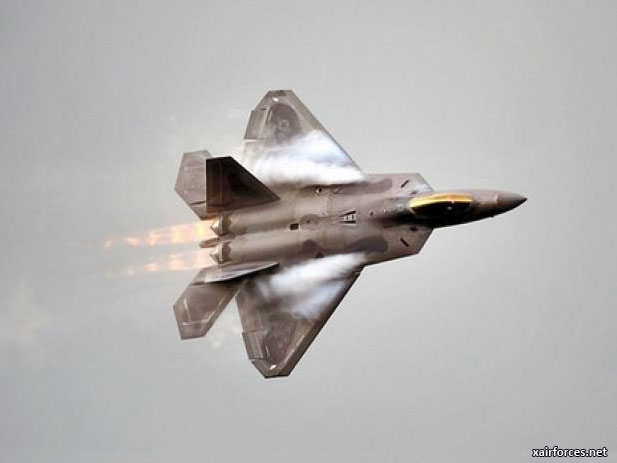
New Flight Restrictions Haven't Curbed F-22 Operations

Safety measures put in place last month on F-22 Raptor flights have had no impact on operations, Pentagon spokesman Navy Capt. John Kirby told reporters Jun. 5.
Kirby and Pentagon Press Secretary George Little last month announced restrictions to F-22 flight operations after 12 pilots reported hypoxia-like symptoms.
In response, Secretary of Defense Leon E. Panetta directed the retrofitting of automatic backup oxygen systems in the Raptor.
The Air Force is investigating the issue and providing monthly reports to Panetta.
In addition, all F-22 flights were ordered to remain near potential landing locations to enable quick recovery and landing should a pilot encounter problems during flight, Little said last month.
There are no plans to ground the aircraft, but Kirby said the Defense Department remains prepared for all possibilities.
“It's a safety-of-flight issue,” he said. “Secretary Panetta understands that, and he's not taking any options off the table with respect to the future of the aircraft.”
“Right now the aircraft is performing very well in an operational setting and … we're just going to continue to watch this as we move forward,” Kirby said.
Source: By the Department of Defense (United States) News - 05 June 2012
Photo Story: Combat Edge Anti-g Ensemble Hight Be Causing Raptor’s Oxygen Woes (Photo by dailyairforce.com)
The Combat Edge upper pressure-garment worn by US Air Force pilots flying the Lockheed Martin F-22 Raptor might be the cause of the fifth-generation fighter's oxygen maladies, sources say.
While pilots need counter-pressure from the vest-like pressure garment to exhale at low cabin pressures found in the Raptor's cockpit, the Combat Edge and associated breathing systems might be providing too much pressure especially under g-loading.
"It just seems a little weird to breathe of off this thing," one source says. "Because you can't expand your lungs as easily because you have something restricting you."
The extra load imposed on the pilots by the added pressure under g-forces could be causing them to "over-breathe the system".
A compounding factor may be a condition known as acceleration atelectasis. The condition causes the pilot's lungs to have trouble bringing oxygen to the blood system because pure oxygen--93% oxygen in the Raptor's case-- and high gravity loads set up the pilots for a condition where the air sacs in the lungs suffer partial collapse.
The result of acceleration atelectasis is the so called "Raptor cough"-where F-22 pilots have a pronounced cough as the pilot's body attempts to re-inflate the sacs under normal atmospheric pressure on the ground.
Earlier tests would not have caught the problem because the breather device used to test the Combat Edge system does not compensate for pilot's lungs being unable to expand as readily. The breather device always draws the same volume of air.
A lack of ability to test for restricted expansion kept the condition from being seen as a problem. The restricted breathing could lead to hyperventilation symptoms or even bigger issues if the pilot is suffering from acceleration atelectasis.
However, the source says, the pressure-garment problem has been a known concern since at least 2000 when a similar garment provided by Boeing was being flown. But at that time, the USAF did not believe that the extra pressure was a serious concern. Now however, the USAF is starting to believe that the Combat Edge is behind the Raptor's woes. But while current USAF research is pointing to the Combat Edge as the primary culprit behind the F-22's maladies, the source says that it is probably only part of the problem.
(6.06.2012)
|